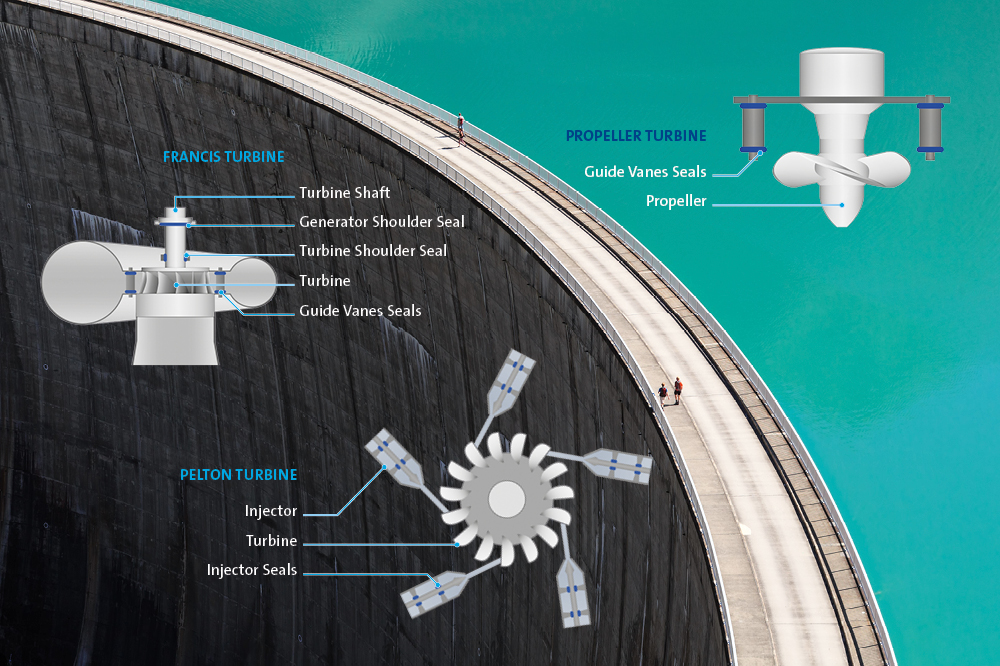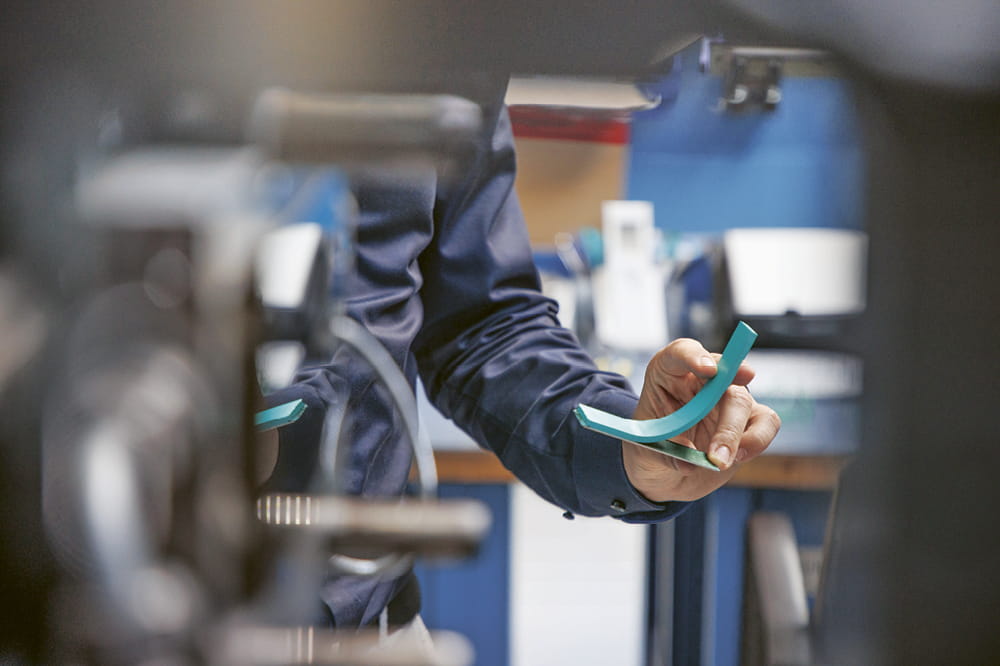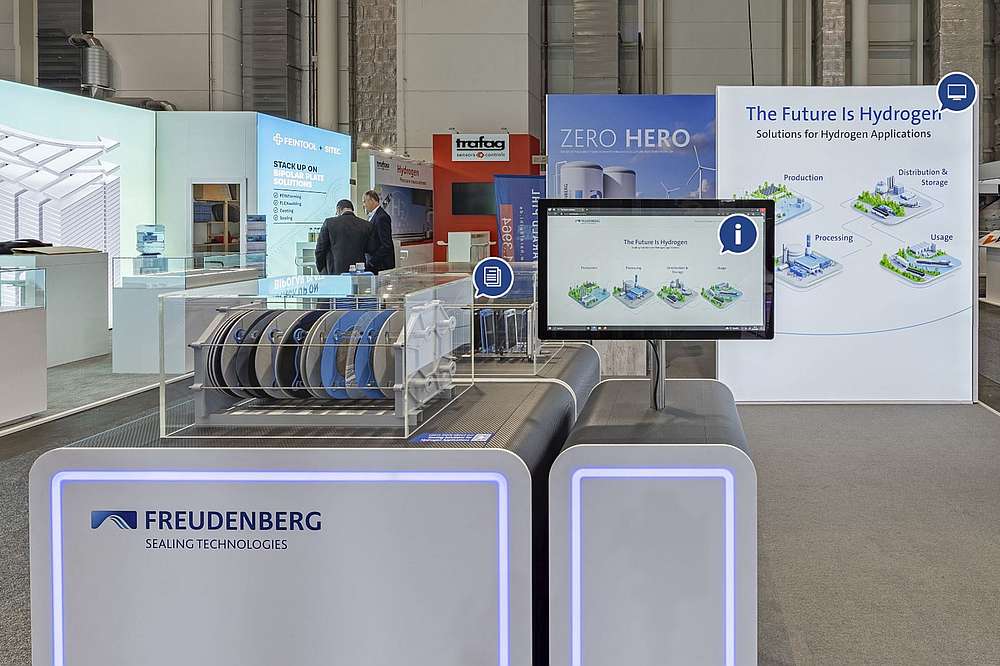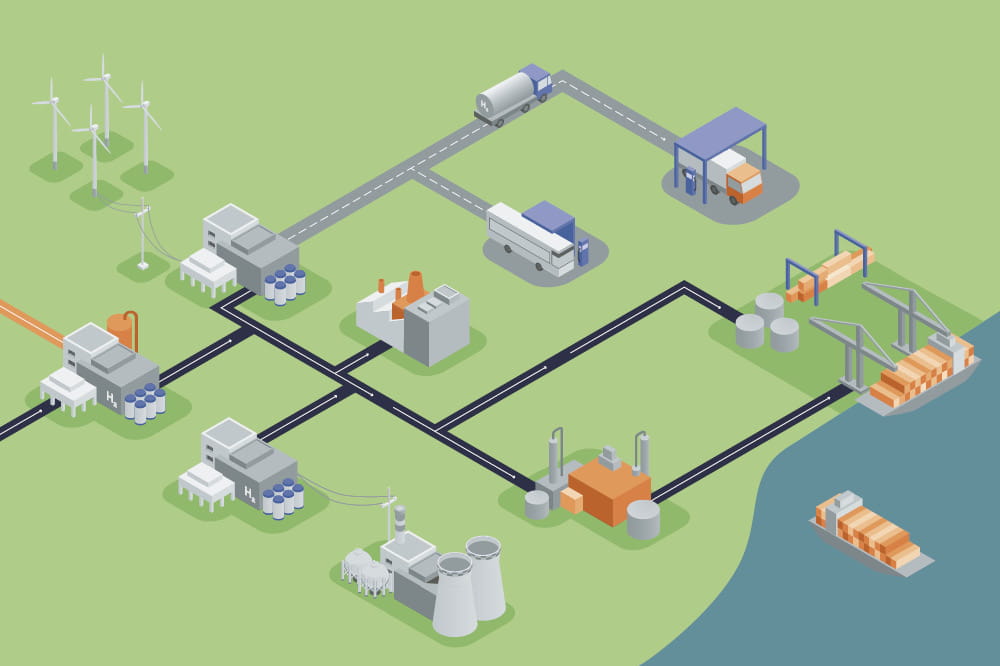Obtain news and background information about sealing technology, get in touch with innovative products – subscribe to the free e-mail newsletter.

02.08.2022 | Story
Fresh From the Lab
“Just a steak from the 3D printer with hightech vegetables, please.” That’s what your restaurant order could sound like even today, thanks to new food concepts created to feed a growing global population.
We are increasing in number. Projections by the United Nations suggest that around 9.7 billion people will be living on our planet by 2050. That’s nearly 2 billion more than today. Can their hunger ever be stilled? Resources are finite. Our appetite is already straining the planet. Year after year, huge stretches of forest give way to farming. Ecosystems are endangered and industrial livestock farming is releasing large quantities of greenhouse gases that accelerate climate change. Scientists and startups around the world are looking for new ways to feed humanity. And they have found a few. The alternatives, in the form of meat from labs and vegetables grown without sunlight or fertile soil, are reaching maturity.
Cultivation under LED lights: The vegetables in this indoor farm grow without sunlight. © iStock: Zinkevych; AzmanL
250,000 Euros for a Lab Burger
Anyone who gets the chance to try a slab of meat from the lab, known as “in vitro meat,” is likely to barely notice a difference. After all, it not only looks like real meat, but it closely tastes like the real thing, too. This is confirmed by diners at “The Chicken” in the Israeli city of Nes Ziona. Chicken burgers are served there during taste tests. The meat is grown from muscle and fat cells of chickens. It is enriched in the lab ahead of time with a plantbased solution of nutrients. The diners even get a look at its production during their visit. Only a glass partition separates the lab from the dining room. “The Chicken” is owned by Supermeat, a food manufacturer. While the company works on the development of laboratory meat, it tests its products in the adjoining restaurant. Its vision: to provide a sustainable alternative to meat from large-scale livestock farming.
Supermeat is not alone in its mission. Scientists and startups have been doing research on laboratory meat for nearly 20 years. The first clean meat product was approved in Singapore in 2020. It consisted of cultivated chicken meat from Eat Just, an American company. But the costs are still an obstacle to its introduction to the public. The first laboratory burger was presented in England in 2013; it reportedly cost about 250,000 euros to produce. Today the cost of producing a patty is estimated to be under 50 euros. But the Good Food Institute, a nonprofit organization, estimates that prices for lab meat could be competitive by 2030.
Meat From a 3D Printer
Researchers have not just succeeded in improving the production process for “in vitro meat.” They have also refined its taste. The size of the pieces continues to increase. Last year, another Israeli food technology company produced the heaviest artificial beefsteak so far. The lab meat weighs 110 grams (nearly 4 ounces) and was created with a sophisticated 3D printing operation. The process involves extracting and then replicating real muscle and fat cells from tissue samples. In the next step, the beef cells are integrated into so-called “BioInks.” They can then be printed with a 3D printer and take the form of a steak. The printed product then matures in an incubator where the animal cells divide into fat and muscle cells. The resulting steak matches the original in terms of its appearance and consistency.
High-tech Vegetables From an Indoor Farm
The urban concept of so-called indoor farming is also based on vertical growing technology. Here, fruits and vegetables are grown in indoor spaces. LED lights replace sunlight. The process does not even use soil. Instead, the plants thrive on peat or recycled plastic. Irrigation and lighting systems create ideal conditions. The plants are mostly raised on top of one another on multiple levels. So-called vertical farming requires significantly less ground space than conventional agriculture.



High-tech cultivation is already a reality in many countries. The world’s largest indoor farm is now being developed in Dubai. The company, CropOne, has established a number of products in the American market, and up to 3,000 kilograms of leafy vegetables can be harvested every day in the new production facility. This major project emerged from a joint venture with the Emirates Group. Vegetables grown indoors are expected to be served on airline flights. The company’s compelling argument is that the system requires minimal amounts of water. It says its vegetables need about 95 percent less water than their counterparts grown in fields.
Basil and Tilapia in Symbiosis
But the concept also works one size smaller. Some startups have developed farming systems that can be integrated with the vegetable departments of supermarkets. The German company ECF Farming has come up with further variations: The company’s so-called aquaponics method raises both basil and tilapia together. Plants and animals are connected by a common circuit, and they benefit from one another. The fish swim on the floor level directly above the supermarket, and the basil crop is one floor higher, under a glass roof. Water circulates between the two levels. While the plants are drawing nutrition from the water inhabited by the fish, the latter are using the oxygen the plants produce. The setup has enabled a supermarket in Wiesbaden, Germany, to raise fish and basil on its own. This allows transport distances and cooling chains to be shortened, improving the CO2 balance sheet.
An entire steak emerges from a few animal cells, and vegetables grow to perfection without soil or sunlight. So will we be able to do without natural resources in the future and thus conserve them? So far, no complete array of products can be reproduced, either in labs or indoor greenhouses. In addition, high costs are dampening aspirations for mass production. And the concept of artificial meat may not appeal to people for some time. But the skepticism won’t necessarily last very long, as vegetarian and vegan meat substitutes have shown. They are now on supermarket shelves and enjoying growing popularity.
More news on the subject Sustainability

Join Us!
Experience Freudenberg Sealing Technologies, its products and service offerings in text and videos, network with colleagues and stakeholders, and make valuable business contacts.
Connect on LinkedIn! open_in_new









